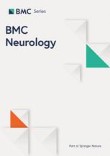|
Medicine RSS-Feeds by Alexandros G. Sfakianakis,Anapafseos 5 Agios Nikolaos 72100 Crete Greece,00302841026182,00306932607174,alsfakia@gmail.com
Πληροφορίες
Τετάρτη 28 Οκτωβρίου 2020
Pilotstudie zum Einfluss von kaltem atmosphärischem Plasma auf bakterielle Kontamination und Heilungstendenz chronischer Wunden
Comparative accuracy of cone‐beam CT and conventional multislice computed tomography for real‐time navigation in zygomatic implant surgery
|
The right thalamic ventral posterolateral nucleus seems to be determinant for macrosomatognosia: a case report
|
Effect of vitamin A, calcium and vitamin D fortification and supplementation on nutritional status of women: an overview of systematic reviews
|
Combination of a CD26 Inhibitor, G-CSF, and Short-term Immunosuppressants Modulates Allotransplant Survival and Immunoregulation in a Rodent Hindlimb Allotransplant Model
|
The right thalamic ventral posterolateral nucleus seems to be determinant for macrosomatognosia: a case report
|
Trabecular Bone is Increased in a Rat Model of Polycystic Ovary Syndrome
|
Extrauterine adenomyoma located in the inguinal region
|
A unique case of medulla oblongata epidermoid cyst
|
An unusual case of hyalinizing clear cell carcinoma in a sinonasal cavity and cranial base
|
Clipping of a basilar tip aneurysm using hypothermia and circulatory arrest: a case report
|
Unusual localizations of hydatid cysts
|
Αρχειοθήκη ιστολογίου
-
►
2023
(366)
- ► Φεβρουαρίου (184)
- ► Ιανουαρίου (182)
-
►
2022
(2814)
- ► Δεκεμβρίου (182)
- ► Σεπτεμβρίου (213)
- ► Φεβρουαρίου (264)
- ► Ιανουαρίου (262)
-
►
2021
(3815)
- ► Δεκεμβρίου (229)
- ► Σεπτεμβρίου (276)
- ► Φεβρουαρίου (64)
-
▼
2020
(5754)
- ► Δεκεμβρίου (401)
-
▼
Οκτωβρίου
(186)
-
▼
Οκτ 28
(25)
- Pilotstudie zum Einfluss von kaltem atmosphärische...
- Comparative accuracy of cone‐beam CT and conventio...
- The right thalamic ventral posterolateral nucleus ...
- Effect of vitamin A, calcium and vitamin D fortifi...
- Combination of a CD26 Inhibitor, G-CSF, and Short-...
- The right thalamic ventral posterolateral nucleus ...
- Trabecular Bone is Increased in a Rat Model of Pol...
- Extrauterine adenomyoma located in the inguinal re...
- A unique case of medulla oblongata epidermoid cyst
- An unusual case of hyalinizing clear cell carcinom...
- Clipping of a basilar tip aneurysm using hypotherm...
- Unusual localizations of hydatid cysts
- To do or not to do: prolapsed, bleeding, rectal po...
- A complicated pulmonary hydatid cyst resembling a ...
- Scalp mass: an atypical presentation of multiple m...
- Unusual disseminated Talaromyces marneffei infecti...
- Hypoxia induces transcriptional and translational ...
- Chromatin Looping Shapes KLF5-dependent Transcript...
- Chemotherapy-Induced Upregulation of Small Extrace...
- Circ_0001421 facilitates glycolysis and lung cance...
- Distinct Genomic Alterations in Prostate Tumors
- Irrespective of the degree of hyperlactatemia, sim...
- Effect of continuous positive airway pressure on g...
- Degos disease
- The feasibility and safety of photoselective vapor...
-
▼
Οκτ 28
(25)
- ► Σεπτεμβρίου (365)
- ► Φεβρουαρίου (754)
- ► Ιανουαρίου (894)
-
►
2019
(146)
- ► Δεκεμβρίου (19)
- ► Σεπτεμβρίου (54)











